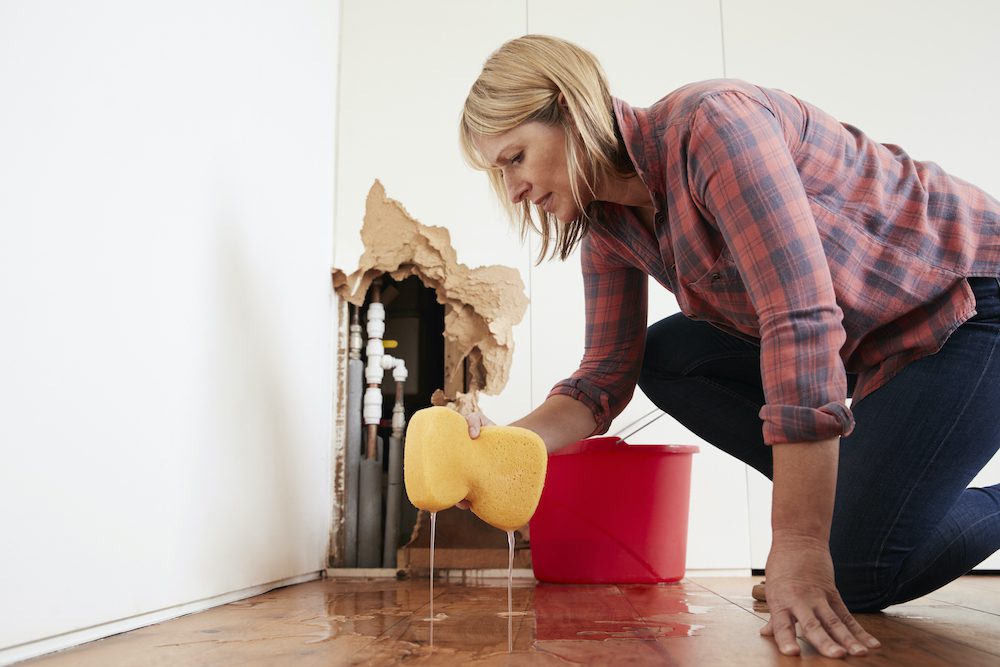Just how to Locate as well as Repair Work Water Leaks-- A Comprehensive Guide
Just how to Locate as well as Repair Work Water Leaks-- A Comprehensive Guide
Blog Article
They are making several good points about Leaking water lines as a whole in this article following next.

Early discovery of dripping water lines can minimize a possible disaster. Besides conserving you money, it will decrease the irritation and frustration. The minute you find a leak, calling your plumber for fixings is the very best option. Nevertheless, some tiny water leakages may not show up. Right here are some hacks that assist if you can not spot it with your nude eyes.
1. Examine the Water Meter
Every residence has a water meter. Examining it is a surefire way that helps you find leakages. For starters, shut off all the water sources. Ensure no one will purge, make use of the tap, shower, run the cleaning device or dish washer. From there, go to the meter and watch if it will alter. Considering that no one is using it, there need to be no motions. If it relocates, that indicates a fast-moving leakage. Likewise, if you identify no changes, wait an hour or more and also examine back once again. This implies you might have a slow-moving leak that can also be below ground.
2. Inspect Water Intake
Evaluate your water costs and track your water intake. As the one paying it, you must see if there are any type of discrepancies. If you find sudden changes, despite your consumption being the same, it means that you have leakages in your plumbing system. Keep in mind, your water bill need to fall under the very same array every month. An abrupt spike in your costs indicates a fast-moving leakage.
At the same time, a consistent increase on a monthly basis, even with the very same practices, reveals you have a sluggish leak that's additionally gradually intensifying. Call a plumber to thoroughly check your residential or commercial property, especially if you really feel a cozy location on your flooring with piping below.
3. Do a Food Coloring Test
When it comes to water intake, 30% comes from toilets. If the color in some way infiltrates your bowl throughout that time without flushing, there's a leakage between the container and also dish.
4. Asses Exterior Lines
Don't neglect to examine your outdoor water lines also. Test faucets by affixing a garden tube. Must water seep out of the link, you have a loosened rubber gasket. Replace this as well as ensure all links are limited. If you've got a lawn sprinkler, it will certainly help get it skillfully took a look at and also preserved annually. One small leakage can throw away tons of water and increase your water bill.
5. Examine and Evaluate the Scenario
House owners need to make it a routine to inspect under the sink counters and even inside cupboards for any kind of bad odor or mold and mildew growth. These two red flags show a leak so timely attention is required. Doing regular evaluations, even bi-annually, can conserve you from a significant problem.
If you know your house is currently old, keep a watchful eye on your heating units, hoses, pipelines etc. Look for stainings and also weakening as a lot of pipelines and appliances have a life expectancy. They will additionally normally degrade because of tear as well as wear. If you suspect leaking water lines in your plumbing system, don't wait for it to rise. Call an expert plumber right away so you do not end up with an awful mess in your home.
Early discovery of leaking water lines can minimize a prospective disaster. Some little water leaks might not be visible. Examining it is a surefire means that helps you discover leakages. One tiny leakage can lose loads of water and also spike your water expense.
If you suspect dripping water lines in your plumbing system, don't wait for it to intensify.
WARNING SIGNS OF WATER LEAKAGE BEHIND THE WALL
PERSISTENT MUSTY ODORS
As water slowly drips from a leaky pipe inside the wall, flooring and sheetrock stay damp and develop an odor similar to wet cardboard. It generates a musty smell that can help you find hidden leaks.
MOLD IN UNUSUAL AREAS
Mold usually grows in wet areas like kitchens, baths and laundry rooms. If you spot the stuff on walls or baseboards in other rooms of the house, it’s a good indicator of undetected water leaks.
STAINS THAT GROW
When mold thrives around a leaky pipe, it sometimes takes hold on the inside surface of the affected wall. A growing stain on otherwise clean sheetrock is often your sign of a hidden plumbing problem.
PEELING OR BUBBLING WALLPAPER / PAINT
This clue is easy to miss in rooms that don’t get much use. When you see wallpaper separating along seams or paint bubbling or flaking off the wall, blame sheetrock that stays wet because of an undetected leak.
BUCKLED CEILINGS AND STAINED FLOORS
If ceilings or floors in bathrooms, kitchens or laundry areas develop structural problems, don’t rule out constant damp inside the walls. Wet sheetrock can affect adjacent framing, flooring and ceilings.
https://www.servicemasterbyzaba.com/blog/how-to-detect-water-leakage-in-walls/

As a devoted person who reads on Leaking water lines, I imagined sharing that piece of content was beneficial. If you please take the opportunity to promote this post if you enjoyed it. I am grateful for your time. Visit again soon.
Report this page